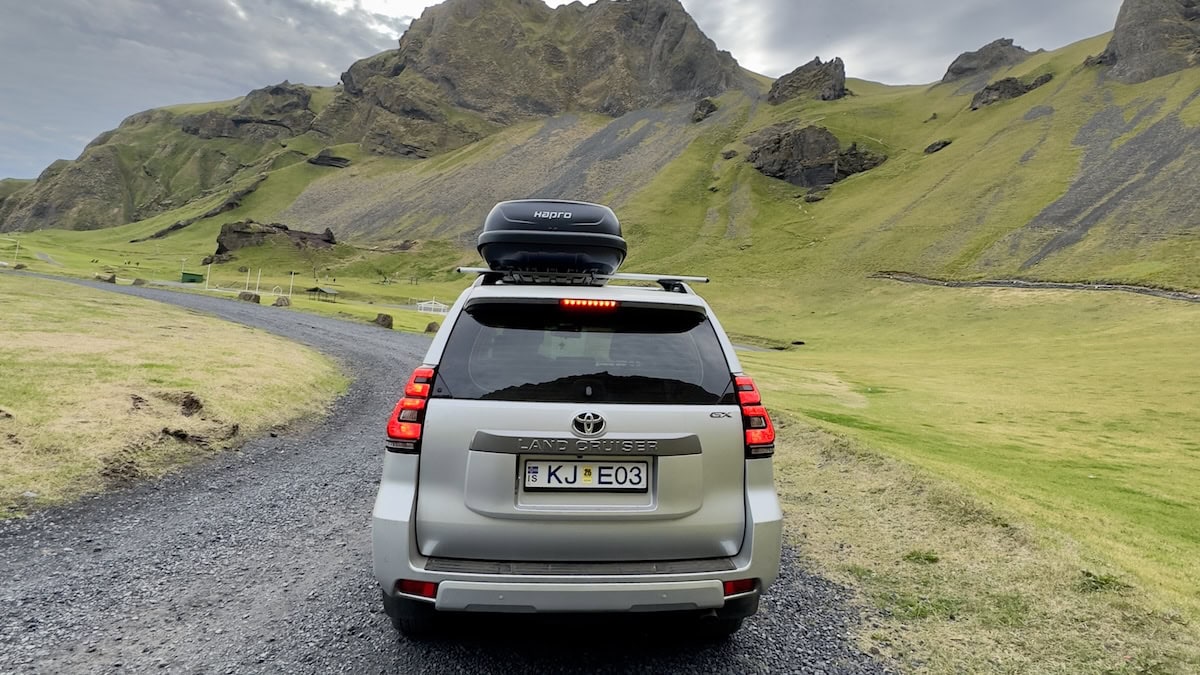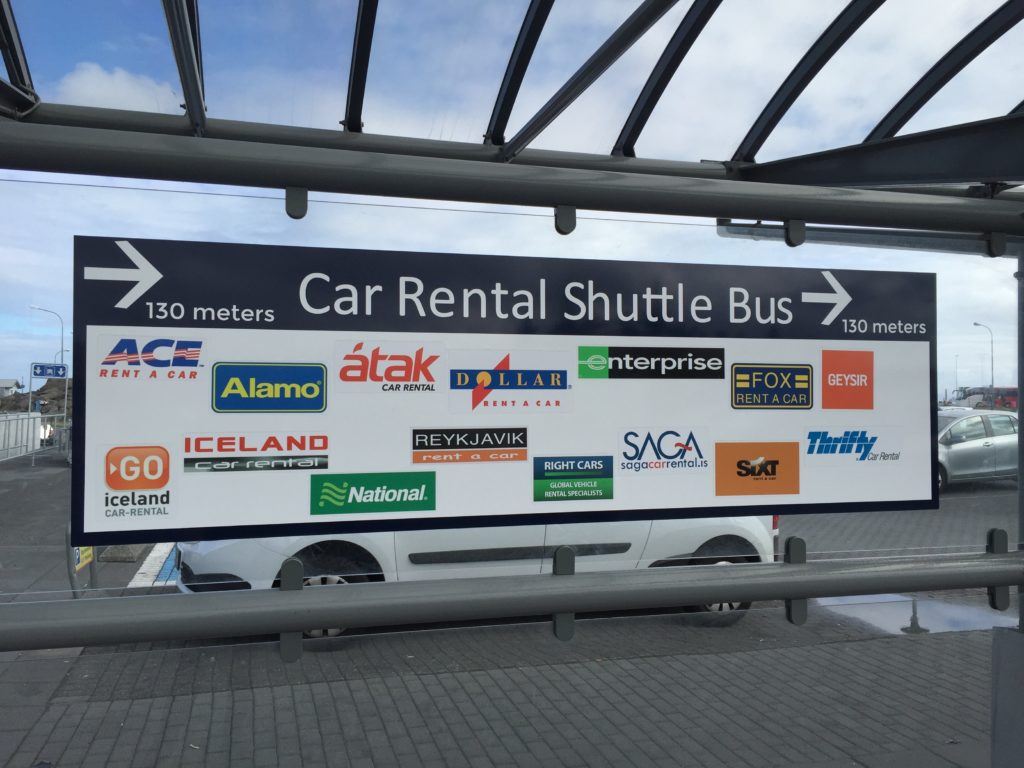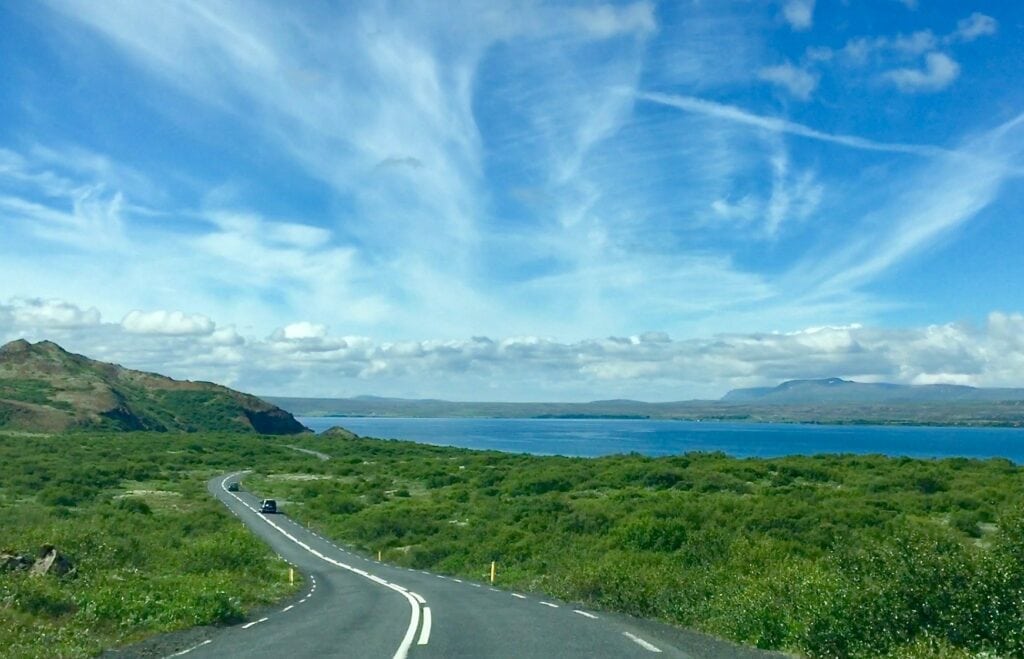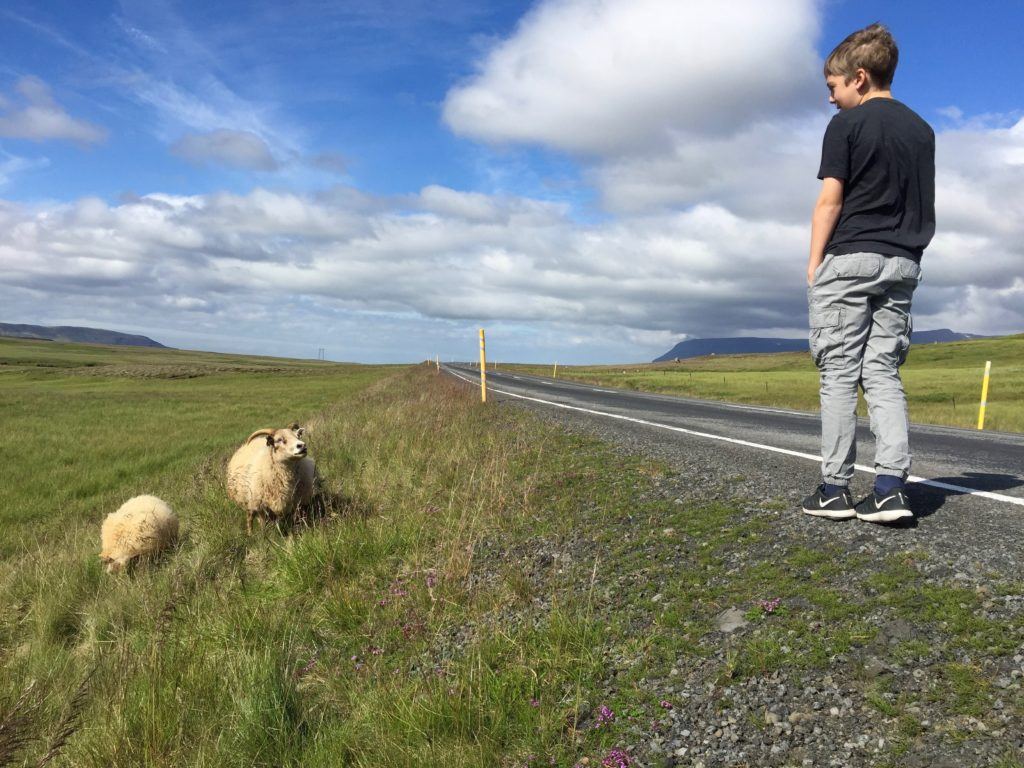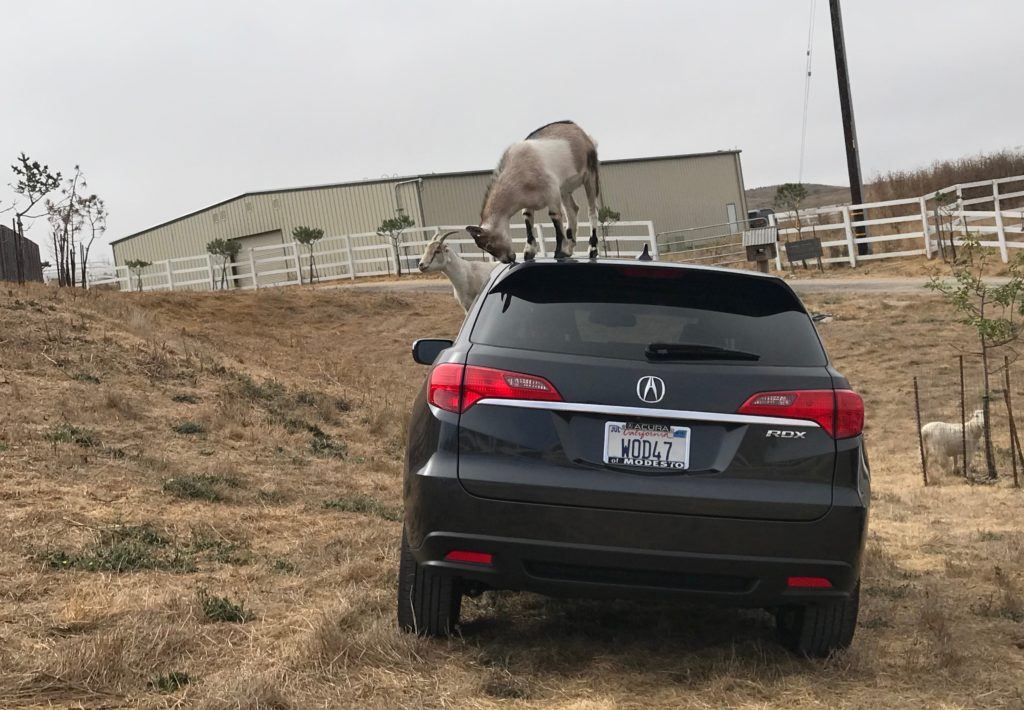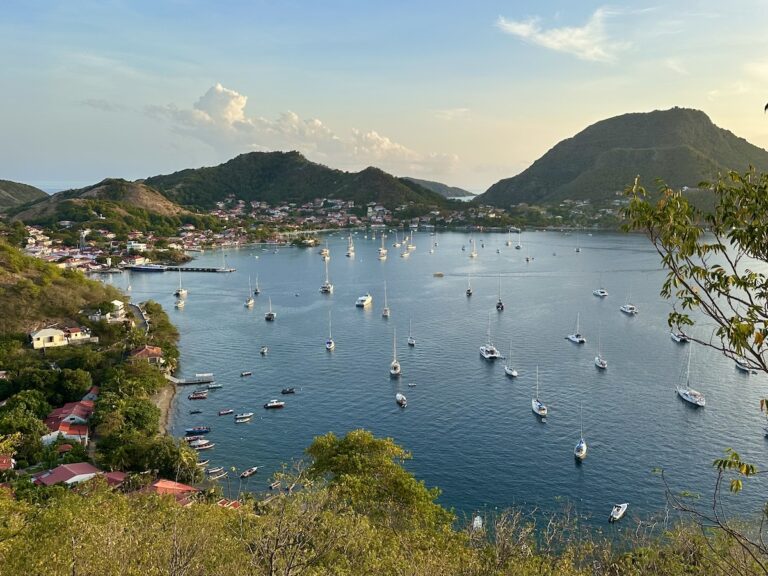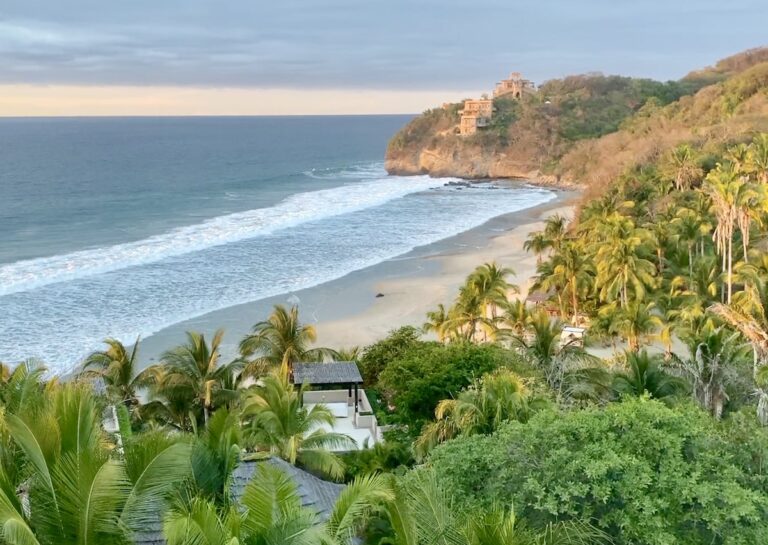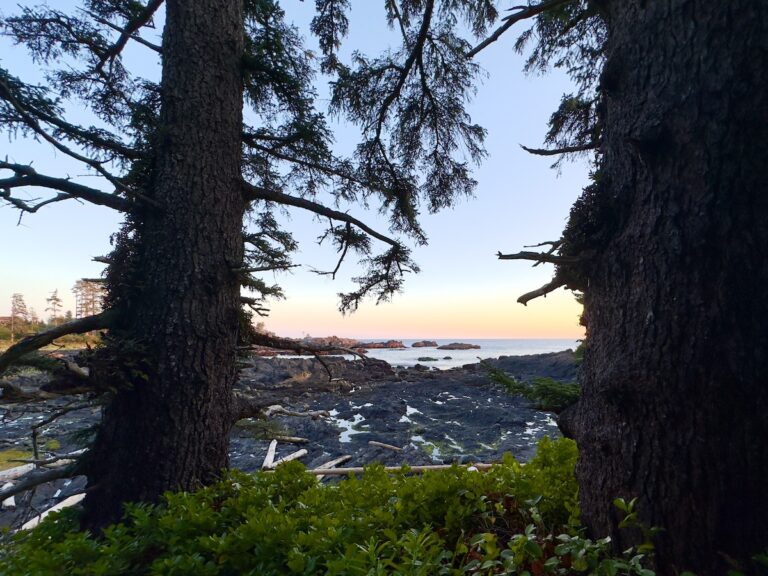How to Find the Best Iceland Rental Car (2025)
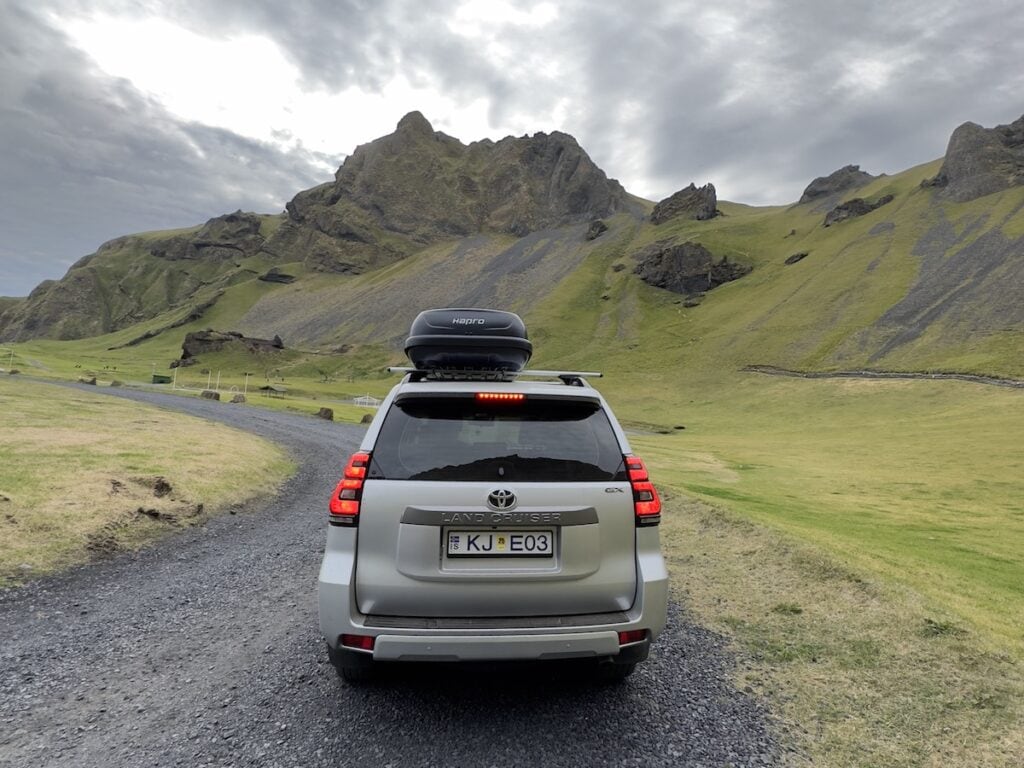
Affiliate Disclosure: This Best Iceland Rental Car post contains affiliate links. If you click on a link and make a purchase, I may receive a small commission at no cost to you.

HI, I’M TARA!
I fell crazy in love with Iceland on my first trip back in 2016 and have been creating guides to help others discover this extraordinary destination ever since!
INTRODUCTION – BEST CAR RENTALS ICELAND
Driving in Iceland is an unforgettable experience, but it comes with unique challenges that require some extra preparation. With proper research, however, opting for a rental a car in Iceland is undoubtedly the best way to explore this stunning country at your own pace.
From my experiences across multiple trips, I’ve learned the importance of understanding how to drive safely in Iceland, diving into countless Iceland car rental reviews, and paying close attention when making an Iceland rental car reservation.
This northern island nation’s geography and weather are so unique that things like the type of insurance coverage you purchase can really matter. For example, Sand and Ash Insurance was not something I had ever heard of before trying to book an Iceland airport rental car (more on this later).
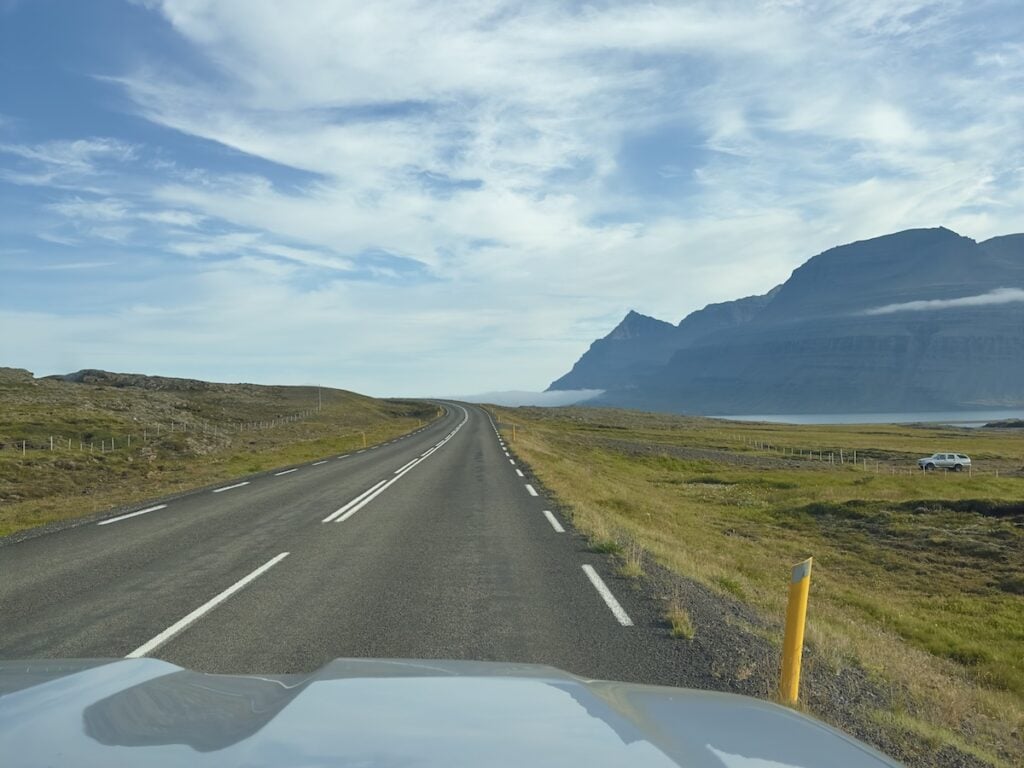
Another eye-opener was the cost of renting a car in Iceland. Between additional insurance and high demand, the price can be rather shocking. My attempt to secure a car rental from Keflavik Airport (KEF, Iceland’s international airport) gave me firsthand experience with “sticker shock.” Judging by the many travel forum threads with titles like “Rent a Car in Iceland Cheap!!!,” it’s clear I wasn’t alone in this discovery.
In this post, I’ll share tips to help you discover the best car rental companies in Iceland, save money, choose the perfect type of car, and select the right insurance for your adventure. Read on (or use the menu below) for my best Iceland car rental advice and essential driving tips.
ICELAND SELF DRIVE VIDEO (1 MIN)
Before we get into all the important stuff that you should know about finding the best car rental in Iceland for your needs, I want to start with this 1-minute video to inspire your Iceland adventure.
From self driving the Iceland Ring Road around the entire country to renting a car in Reykjavik for the day to drive the Golden Circle, the breathtaking sights are sure to amaze you!
RENTAL CARS ICELAND – INSURANCE
Although I will go into this topic in a much more detailed manner further on, proper insurance is one of the most important things to consider when renting a car in Iceland, and here is why.
With four trips to Iceland and thousands of kilometers of driving under our belts, we’ve learned why extra rental car insurance is essential.
This became abundantly clear during our first trip. While returning our rental car, we saw a couple shocked to learn they owed $2,000 for gravel damage. I nervously recalled a detour where a truck sprayed gravel all over our car. Luckily, we avoided damage—and a hefty bill—but the experience stuck with me.
THE TAKEAWAY
I did take this opportunity, however, to pepper the agent with questions. He explained that Iceland’s extreme weather and road conditions result in frequent car damage, from chipped windshields caused by flying gravel to paint damage from sand and ash.
I also learned that some credit card insurance policies have country-specific exclusions, including Iceland—mine included.
Now, as much as it stings, I always opt for the premium, all-inclusive car rental insurance in Iceland. It’s pricey, but when gravel hits the car, I don’t think twice!
BEST ICELAND CAR RENTAL COMPANIES
Most of you reading this are likely interested in car rentals in Iceland airport (or very nearby). To clear up any confusion from the start, Keflavík Airport (KEF) is Iceland’s international airport. This is not to be confused with Reykjavik Airport (RKV), which is exclusively a domestic airport.
While this section is primarily focused on car rentals at Keflavik Airport, I touch on rental cars in Reykjavik city center, as well as car rentals at Reykjavik Airport a little further down.
1. BEST CAR RENTAL ICELAND – LOCAL COMPANIES
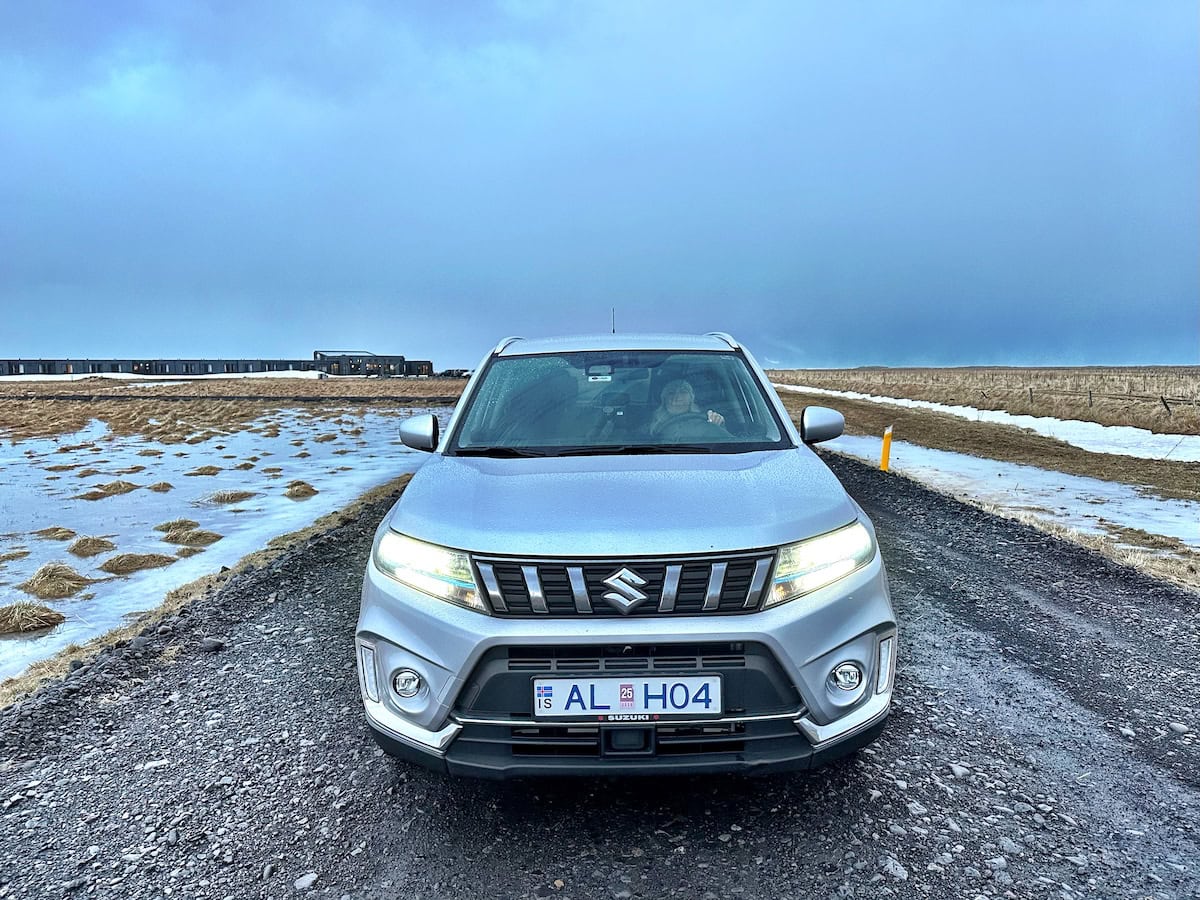
There are several local car rental companies in Iceland that offer great value and customer service—but in my experience, Lava Car Rental stands out as the best. I’ve used them on three separate trips and have always had an excellent experience from start to finish. Their pricing is competitive, the service is reliable, and the booking process is quite seamless.
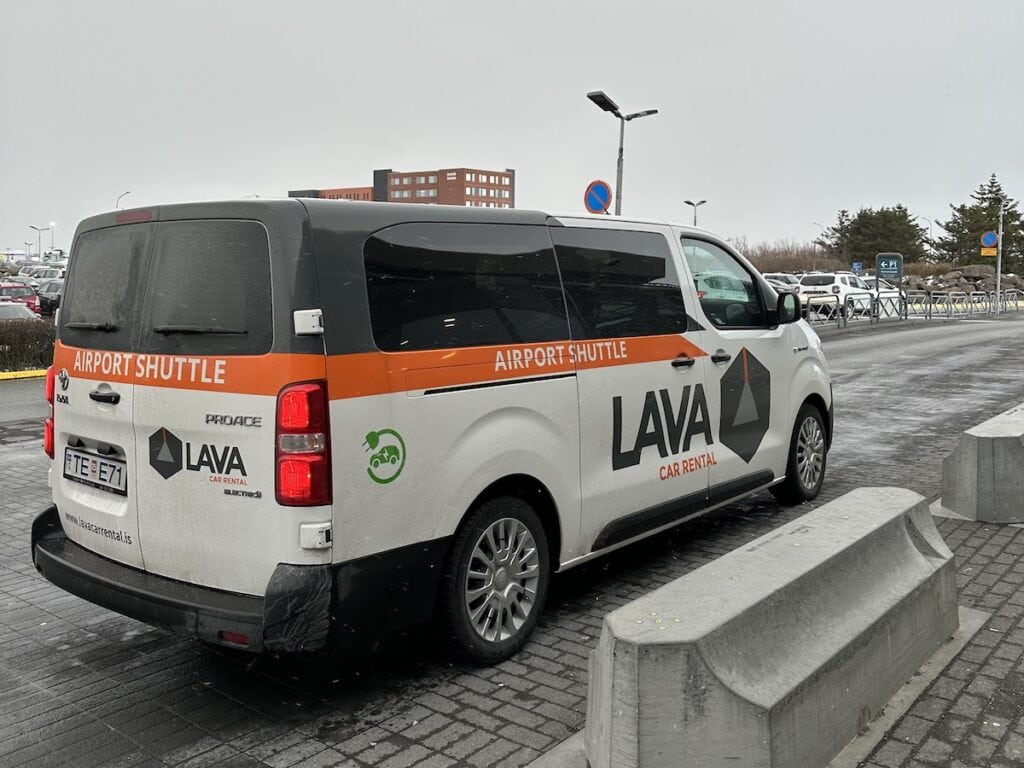
They’re refreshingly transparent, too. You’ll know exactly what kind of vehicle you’re getting—no surprises or pushy upsells at the counter. And both pick-up and drop-off are impressively quick, which is a huge relief on flight days (especially after a red-eye).
👉 Check current rates with Lava Car Rental
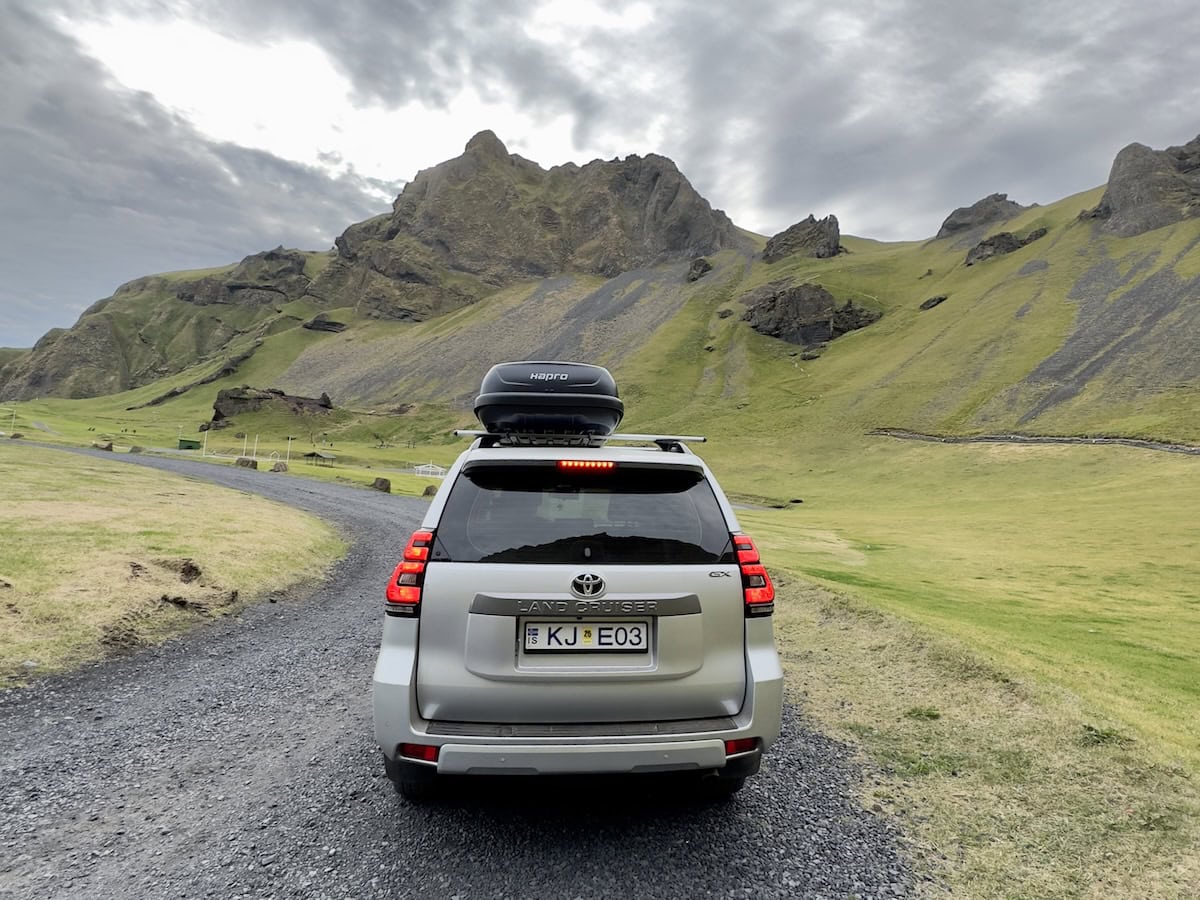
EXCLUSIVE LAVA OFFER
Use the code BEYOND at checkout to save 5% on your rental—just for my readers, thanks to my partnership with Lava Car Rental.
Disclosure: The Lava link above is partner link, which means I may earn a small commission if you book—at no additional cost to you. I only recommend brands I know and trust.
See also recent Lava Car Rental Iceland reviews on Trustpilot.
I have also rented from Blue Car Rental in the past, and the experience was fine. However, I recommend reading the latest Iceland rental car reviews for any company before booking. Even the best Iceland car rental companies can have an off day! Personally, I like to check both Google reviews and Trustpilot reviews.
Note: Neither Lava nor Blue offers the absolute cheapest rental cars in Iceland (and I’ll explain later why you should be cautious of those that do). However, their rates are often significantly lower than most international companies, especially when you factor in extras like recommended insurance, an additional driver, hotspot Wi-Fi, or a GPS..
KEF AIRPORT CAR RENTAL – LOCAL COMPANY TIPS
When renting a car at KEF airport from a local provider, here are a few important things to keep in mind:
- Shuttle Service: You’ll need to take a short shuttle bus (about 15 minutes) to reach the Lava Iceland rental car office and most other local providers. Blue’s office is within walking distance (about 7 minutes), but you may prefer the shuttle if you have a lot of luggage.
- Vehicle Options: Many Iceland car rental companies offer both newer and older vehicles of the same model. Due to Iceland’s challenging terrain and weather, older vehicles often show significant wear and tear. Double-check the model year before confirming your booking so you know exactly what to expect.
2. ICELAND BEST CAR RENTAL – INTERNATIONAL COMPANIES
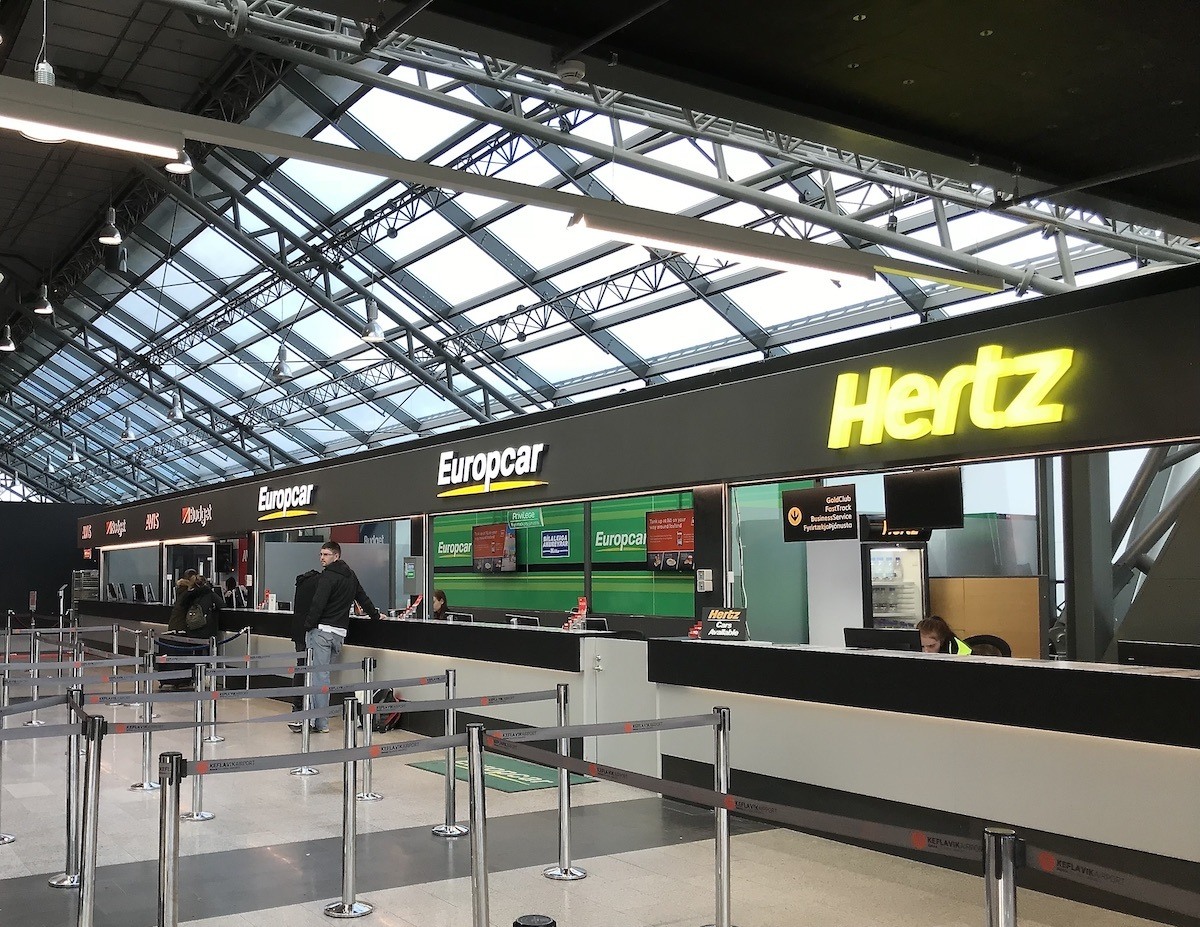
I have a few thoughts on finding the best car rental company in Iceland if you prefer the international brands. Hertz, Budget, Enterprise, Avis, Sixt and Europcar all offer car rentals in Keflavik Airport Iceland (in-terminal pick up).
In terms of pricing for car rentals in Iceland, these places charge the most, but they are also the easiest and quickest.
Expedia provides a convenient car rental Keflavik airport platform on which to compare rates between these major Iceland car rentals airport pick-up providers.
Note: When using the Expedia booking platform, be sure to carefully review the insurance add-ons. If you plan to choose a less inclusive insurance package, assuming your credit card will cover potential vehicle damage, double-check with your credit card provider to confirm coverage. And please don’t skip the upcoming section on insurance in this post—it’s the most important part!
3. BEST ICELAND REYKJAVIK CAR RENTAL COMPANIES
We typically find renting a car from Keflavik Airport with a local company to be the best option for us (we drive a lot). But what if you don’t need a rental car for your whole trip? A car hire from Reykjavik for only a day or two can be a great way to save a bit of money.
When selecting a company for a car rental in Reykjavik, it is ideal if you don’t have to walk too far to pick it up. The following companies offer car rentals in Reykjavik, Iceland, with offices just a 15-20 minute walk from the city center: Hertz, Avis, Budget, and Firefly.
See rates on Expedia. When booking, be sure to select the “Reykjavik City” or “Reykjavik Downtown” pickup location after choosing your car category.
GETTING FROM THE AIRPORT INTO REYKJAVIK
If you’ve opted for a car rental in Reykjavik rather than at Keflavik International Airport, you’ll need to figure out your transportation to and from the airport. Taxis in Iceland are notoriously expensive, with the 52 km, 50-minute trip costing around 20,000 ISK ($140 USD).
Most visitors not renting a car at the airport choose the Flybus—a convenient shuttle from Keflavik Airport to Reykjavik city centre, with multiple stops near popular hotels.
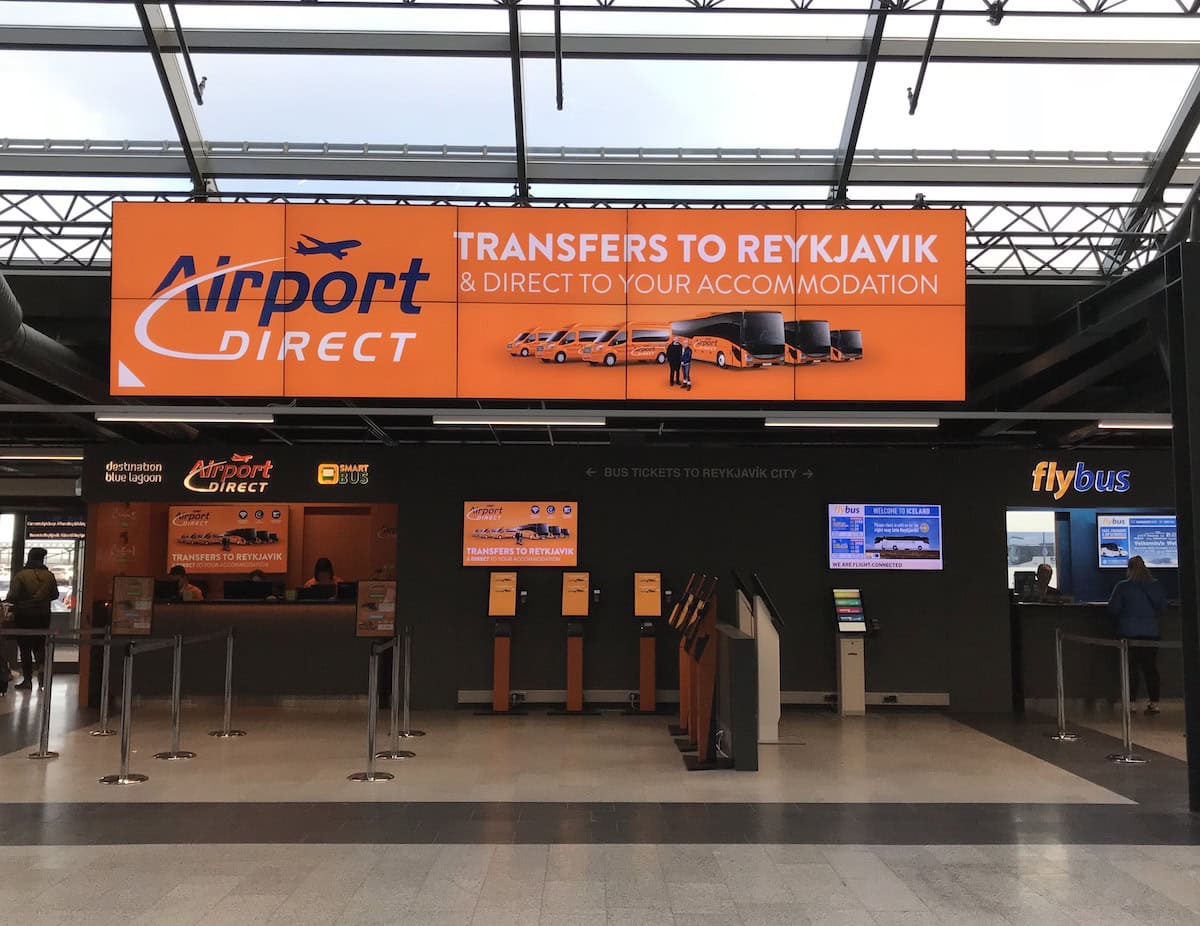
The Flybus costs 3999 ISK for adults and 2000 ISK for youths aged 6-15 ($28/$14 USD) each way. Buses typically depart 30-40 minutes after the arrival of an international flight. Tickets can be purchased online in advance or at the airport ticket booth.
Note: One thing to keep in mind about the Flybus—arriving on a red-eye international flight, in the middle of winter, exhausted, waiting outside in the cold for the bus to arrive can be a bit rough. I distinctly remember thinking, at that moment, that I’d have gladly paid double the cost for a quicker, warmer option.
One other option, is to book a one-way transfer from KEF to Reykjavik City with a stopover at the Blue Lagoon. This iconic geothermal spa is conveniently located near the airport, making it an ideal activity for early morning arrivals or evening departures. It’s a perfect way to relax along the way.
See: KEF to Reykjavik + Blue Lagoon Transfer (Viator.com)
4. ICELAND CAR RENTALS REYKJAVIK AIRPORT
If you’re arriving in Reykjavik by air from another city in Iceland, your car rental options at the domestic airport include Budget and Avis, along with several other local providers. See rates on Auto Europe. When booking, be sure to select the “Reykjavik Domestic Airport” pickup location after choosing your car category.
CHOOSING THE RIGHT KIND OF VEHICLE
One of the most common questions I get on this topic is, “Do I need to rent a 4×4 in Iceland?” The answer depends entirely on where you plan to drive within the country. While a 4×4 rental in Iceland can be a lot of fun, it’s also quite expensive. Unless your itinerary includes areas where a 4×4 is necessary, you may want to consider other options.
1. SUMMER TRAVEL
A standard sedan is perfectly suitable for traveling on Iceland’s main paved roads during the summer months. This includes areas in and around Reykjavik, the Golden Circle Route, the Snæfellsnes Peninsula, and the South Coast.
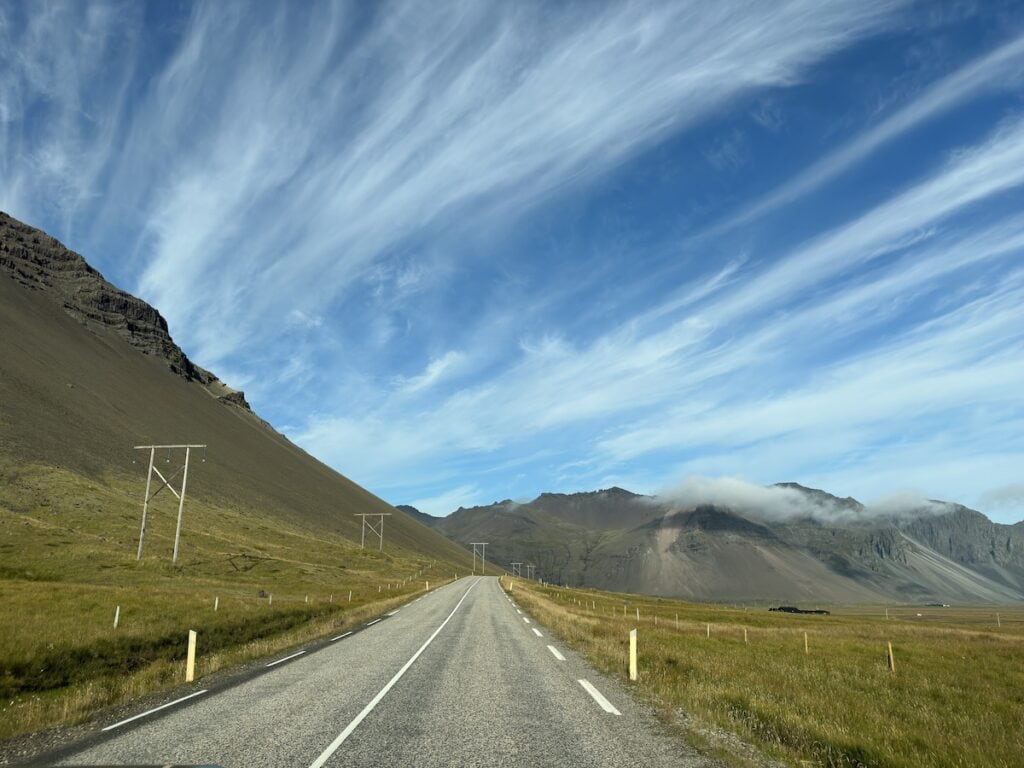
A standard sedan is also suitable for driving the Ring Road in the summer, as long as you stick to the main paved route. The one potential exception is if you plan to include the Westfjords in your Ring Road itinerary. While it’s technically possible to manage with a sedan if you carefully plan your route, I want to share a road shot to illustrate why a 4×4 might feel like a better choice.
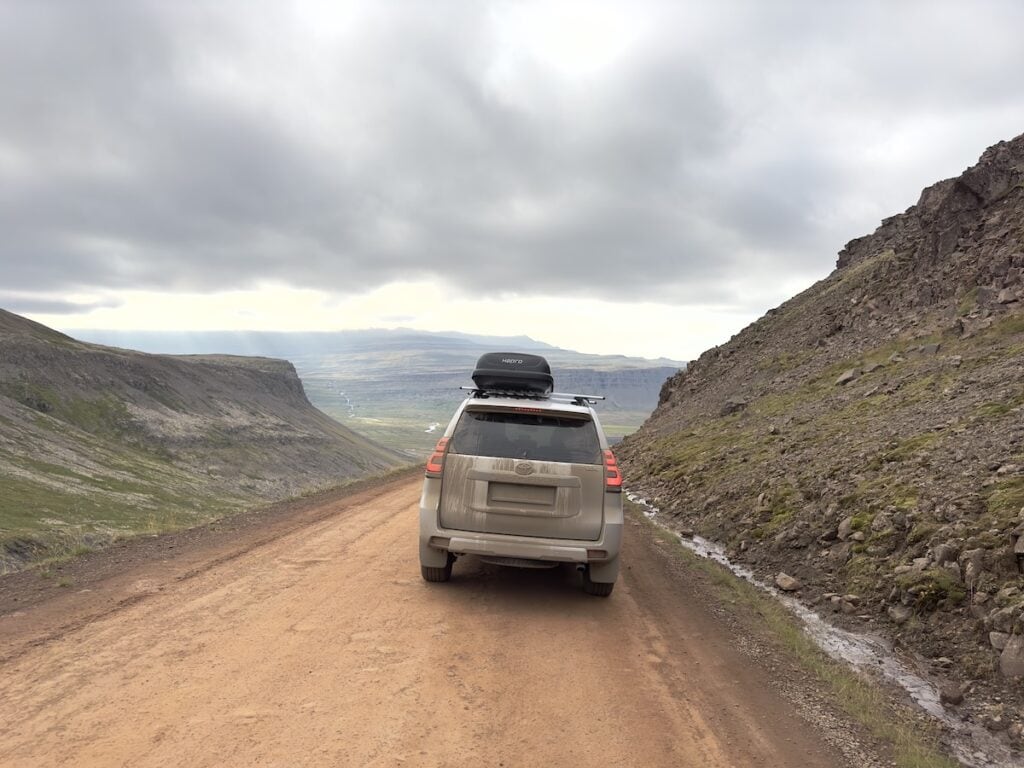
2. F-ROADS OR WINTER ROADS
A 4×4 vehicle is essential for navigating Iceland’s highland roads. These rugged “F-Roads” crisscross the country’s interior and are only open during the summer months.
NOTE: It’s important to note that off-roading is strictly prohibited in Iceland and comes with heavy fines. Furthermore, rental car insurance does not cover damage caused by river crossings. Be sure to research where you can and cannot drive to avoid costly mistakes.
In the winter, a 4×4 is also highly recommended due to Iceland’s unpredictable weather and challenging road conditions. Having driven the South Coast of Iceland in the winter, I can confidently say I would never attempt it without a 4×4. The journey was thrilling and unforgettable, but the roads were often tough to navigate. At one point, the wind even blew a small car off the road!
See also: A Guide to Driving Iceland in Winter and Do You Need a 4×4 in Iceland?.
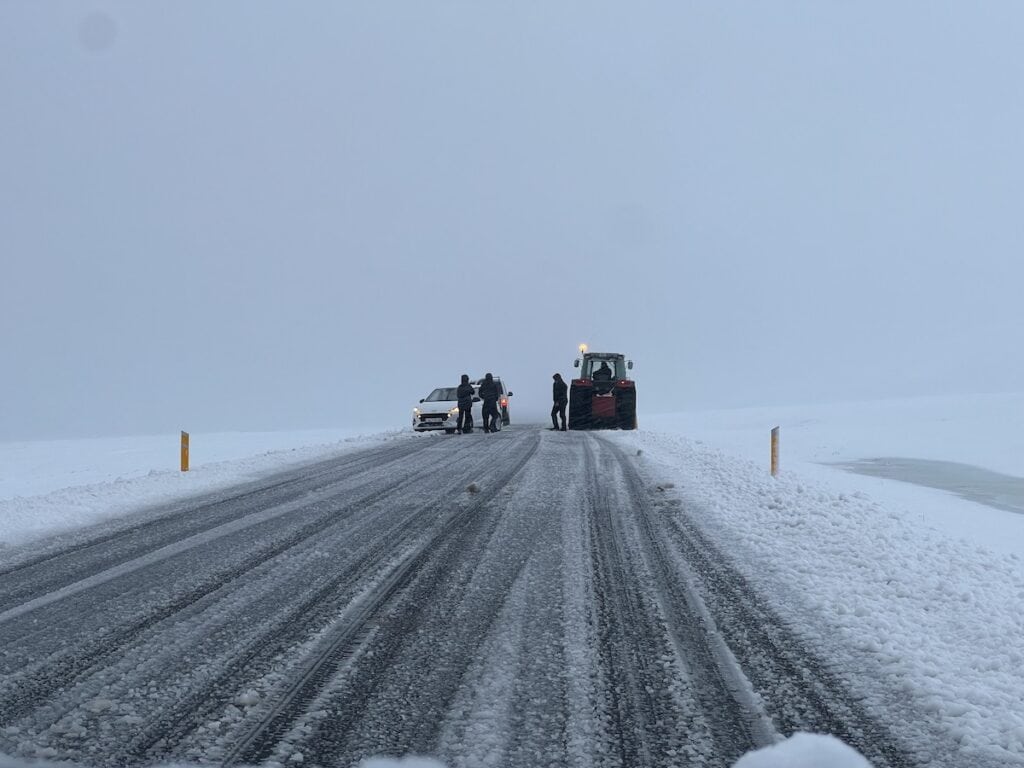
3. MANUAL VS. AUTOMATIC
Cars with automatic transmissions can be in short supply in Iceland and are typically more expensive to rent than manual transmissions. If you require an automatic, be sure to book well in advance to get the right vehicle for your needs.
4. CONVENTIONAL OR ELECTRIC VEHICLE
Fuel costs in Iceland are very high (double what you would pay in the U.S.) Although the up-front costs are higher, an EV could be a great option if you don’t mind the extra time to charge. Most car rental companies in Iceland have the option of renting an electric vehicle and can provide you with what you need to know about charging around the country.
NOTE: Although I have an EV at home, I have never rented one on a trip because I just don’t want to stand around waiting for it to charge or fuss around with an app I am not familiar with.
TOP 12 CAR RENTAL ICELAND TIPS
1. BOOK EARLY
Sky high hotel and car rental rates in Iceland are the norm. This is especially true in the high season of May to October. Get your rental car Iceland reservation as soon as you have your plans fixed. Due to supply issues, the rate is unlikely to go down.
Still want to cover your bases? Make sure your reservation is flexible so that you can cancel and rebook if you do happen to find a better deal.
2. READ ICELAND CAR RENTAL REVIEWS
Before you rent a car in Iceland, please thoroughly read reviews for the car rental company that you are considering. Like in any country, some companies serve their customers much better than others.
There are two common Iceland car rental review complaints. The first is when people are disappointed by the age/condition of the car they receive. The model year is usually noted on the car rental platform (and if it is not, be wary), so please pay attention to this important detail.
The second complaint that is really common in car rental Iceland reviews is unexpected charges at drop-off when damage has occurred to the vehicle and people are under-insured. Repairs in Iceland are exceptionally expensive. Iceland’s unique geography creates some hazards along the roadways (sand, ash and gravel) that most travelers have not faced before.
Although I delve into this in the next section, I cannot impress on you enough how important it is to buy the extra gravel protection insurance (GP) with Iceland rental cars. Sand and ash protection insurance (SAAP) can also be extremely important (erupting volcanos).
NOTE: I am the type of person who generally believes that extra car insurance is a cash grab. In Iceland, however, I suck it up and buy the premium, full-coverage insurance.
3. GET THE RIGHT ICELAND CAR INSURANCE
In addition to your typical car rental insurance (Collision, Third Party Liability, etc.), there are a couple other rental car insurance options in Iceland that you should consider. This is the most important section of this whole post because underinsuring can go very wrong in this rugged land.
CREDIT CARD INSURANCE
If you’re relying on your credit card to cover your rental car insurance needs in Iceland, it’s essential to contact your provider for clarification first. Iceland is listed as an “exception” in some policies. Additionally, some credit card policies exclude certain car types, such as luxury vehicles, recreational vehicles, and 4x4s.
Make sure to request a copy of the policy and understand the requirements if you are covered. Typically, you’ll need to charge the full rental amount to your card and decline the car rental company’s Collision Damage Waiver (CDW).
Here’s an overview of additional insurance options available in Iceland:
GRAVEL PROTECTION INSURANCE (GP)
With most policies, this protection includes damage to windscreen, headlights, front bumper, mirrors and the hood of the car when gravel or rocks gets thrown onto the vehicle by another car.
According to one local company I rented from, their most frequent claims come from body and windshield dings and scratches from gravel roads. This type of damage can cost several thousand dollars to repair for the underinsured. Repair costs, like everything else, are much higher in Iceland.
SAND AND ASH PROTECTION INSURANCE (SAAP)
When the wind blows in Iceland, sand and ash can cause paint damage to vehicles. For this reason, Iceland car rental companies offer SAAP (Sand and Ash Protection).
This is most likely to be an issue in the South Coast and on the highland F Roads in the spring and fall, when there isn’t any snow coverage or natural ground cover. That said, it is still possible for this kind of damage to occur at any time of the year, depending on the ground conditions.
If you are thinking “Does this seriously ever happen?”, as I am sure I did before my first trip, I have the following to share. I took this screen shot on our Iceland Ring Road trip (thankfully on the evening we were flying out).
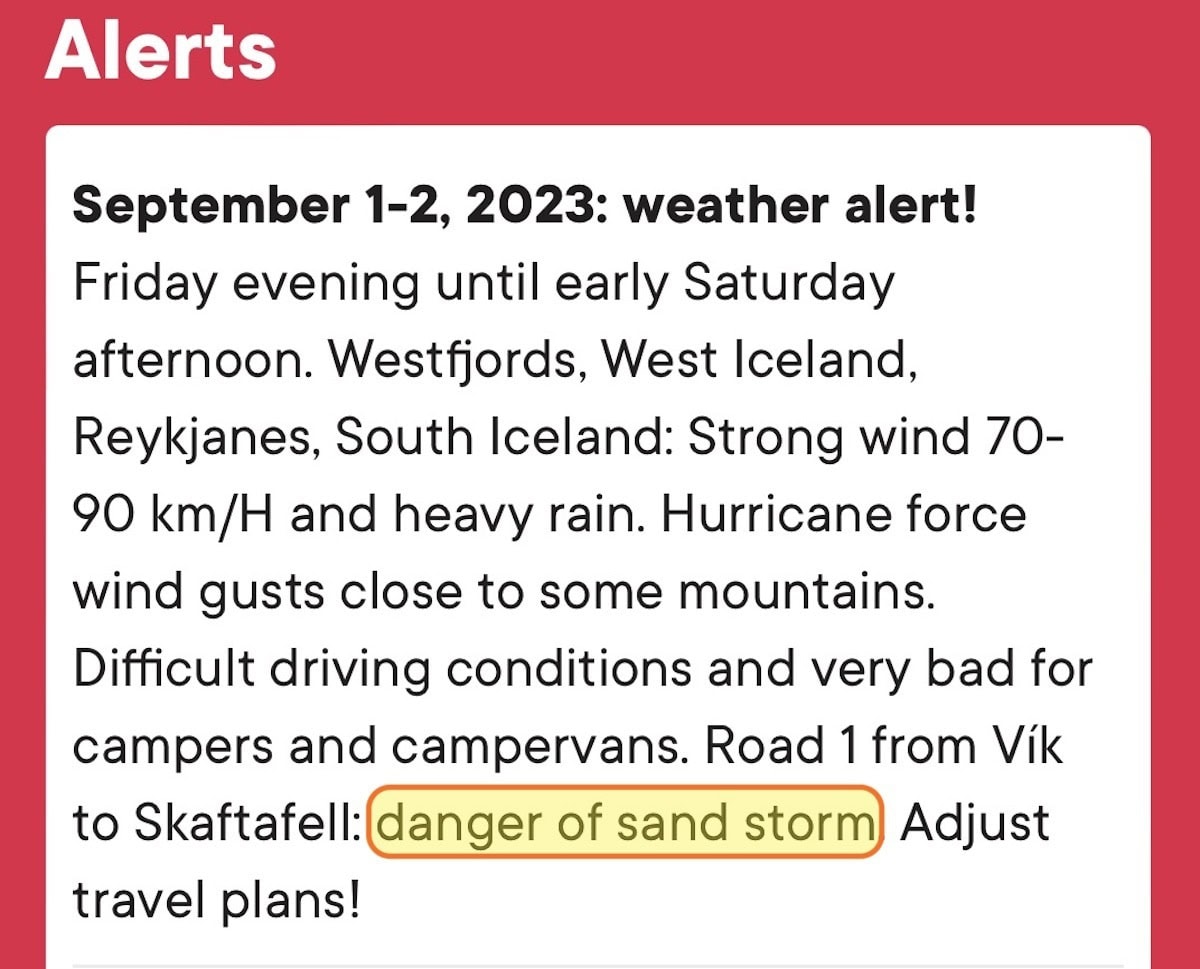
NOTE: If you purchase a Premium Insurance Package for your Iceland car rental, it should cover the aforementioned hazards. However, always double-check the details when picking up your vehicle to ensure you’re fully protected.
THEFT PROTECTION INSURANCE (TP)
Iceland has really low property crime rates. While I don’t consider this type of insurance to be essential, it is usually just included when you are purchasing the other types of insurance.
4. CONSIDER FUEL ECONOMY
While it can be nice to have a big, robust rental vehicle in Iceland, you may want to take into count fuel economy. The price for fuel at gas stations around Iceland is very high. Expect to pay roughly double what you would in the U.S. (slightly less than double for my fellow Canadians).
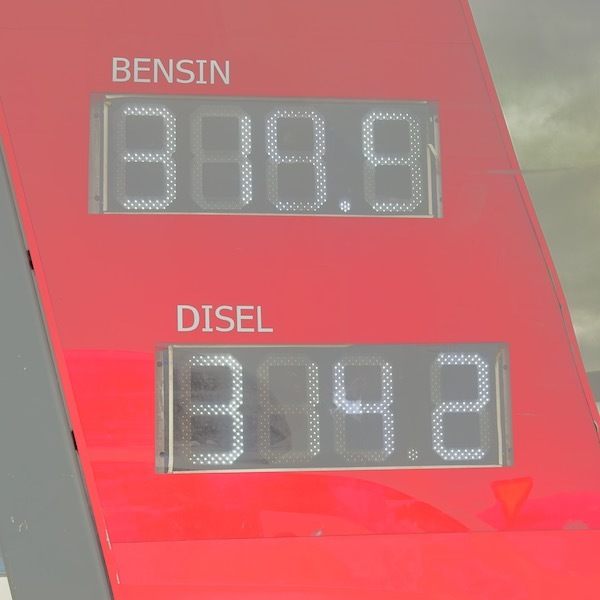
BE CAREFUL WHEN FUELING! I am adding this because a friend of mine filled up their rental car with gas instead of diesel in Iceland! At some stations in Iceland, gas pumps are green, like diesel pumps are in North America. (No car insurance will cover the cost of a tow and system flush out.)
5. PLAN AHEAD FOR FUEL PAYMENTS
Why on the topic of gas in Iceland, I want to mention something about fueling up.
Iceland is a near cashless society. Contactless tap or pin code payment with a credit card is the norm. This can cause an issue for travelers (especially Americans) – most notably at unmanned gas stations.
To avoid any issues, here are some options:
- Contact your credit card provider in advance of your trip and request a pin code. (Be sure to test it out at least once before your trip.)
- Use Apple Pay or Google Pay (available at some stations).
- Buy prepaid gas cards at the beginning of your trip from a manned station or supermarket.
6. LEAVE TIME FOR SHUTTLES
If you want a car rental at Iceland airport terminal, rent with Budget, Avis, Europcar or Hertz.
If you rent from one of the locally-run Iceland airport car rental companies including Lava Car Rental, Reykjavik Cars, Blue Car Rental, and Lagoon Rental, you will need to take a shuttle to pick up your rental vehicle.
We normally take a shuttle and it’s not a big deal (adding about 15-20 minutes). It’s just something you might want to be aware of if you are tight for time.
You also may want to consider the time of year. Waiting for a Keflavik car rental shuttle in June, is generally much more pleasant than in December.
7. TAKE PHOTOS AND VIDEOS
It’s really important to take photos and videos of your rental vehicle upon pickup. While a walk-around inspection with a rental agent is standard practice to document existing damage, relying solely on their report can leave you vulnerable. Be proactive by taking your own detailed photos and videos, paying special attention to any problem areas, and don’t forget to document the vehicle’s interior as well.
If you notice damage that wasn’t noted during the initial inspection, immediately email your photos and videos to the rental company to ensure there’s a record.
When returning your Iceland car rental, it’s equally important to document the vehicle with photos and videos—this is especially critical if you’re returning the car outside of office hours, as no staff will be available to confirm its condition. Taking these extra steps can save you from potential disputes later on.
8. GET THE GPS
Honestly, it’s not such a big place, right? It should be super straight forward to get around…but sometimes it isn’t.
First of all, from a language perspective, you are dealing with some unusual Icelandic characters and it is easy to make a mistake. Second, you may be faced with several options for the same name, or a very similar name (a fair distance apart) and it can be confusing. If you rent a GPS, most popular tourist destinations should already be programmed in (check this before driving away).
A GPS becomes particularly important if you are driving to the Westfjords in Iceland. Cellular reception in this area can be very poor and a GPS is pretty essential for travelers.
NOTE: On our two most recent Iceland trips, we have chosen to have both a GPS and hotspot WIFI in our vehicle. The GPS has provided more consistent navigation (without signal breaks) – while the hotspot WIFI has allowed us to do research on the fly (pick restaurants, book tickets etc.). An international roaming plan is of course another option, but if you are travelling with multiple people, the hotspot may make more economical sense.

EXCLUSIVE RENTAL OFFER
Use the code BEYOND at checkout to save 5% on your rental—just for my readers, thanks to my partnership with Lava Car Rental.
Disclosure: The Lava link above is partner link, which means I may earn a small commission if you book—at no additional cost to you. I only recommend brands I know and trust.
9. BEWARE THE HIDDEN FEES
If you plan on seeing a lot of Iceland, you will want to make sure that your rental car agreement includes unlimited mileage. Like everything else in Iceland, going over your limit can otherwise prove quite costly. Read all the fine print!
10. BEWARE THE CHEAP RENTAL CAR IN ICELAND
If you’re researching cheap car rentals in Iceland or budget car rentals in Iceland, keep in mind that some companies offer older fleets of vehicles at discounted rates. Iceland’s tough road conditions can leave these cars in rough shape. While they might suit your needs, it’s crucial to set your expectations accordingly.
I highly recommend reading Iceland car rental reviews and forum posts from travelers who have used specific providers. Platforms like TrustPilot can provide valuable insights. Doing your research in advance can help you avoid surprises and ensure a smoother rental experience.
ICELAND DRIVING TIPS VIDEO
Want a couple of quick tips for driving in Iceland? Check out this amusing little video from Inspired by Iceland. Please especially pay attention to the part about yielding on one lane bridges. You will find these bridges all over the place if you are venturing further than Reykjavik and the Golden Circle.
TOP TIPS FOR DRIVING IN ICELAND
1. READ THE SAFETY BROCHURE
I’m going to be honest, I’m not one to read the safety pamphlet that they are almost certainly going to give you when you rent your car. If you do, however, I am going to guarantee that it is going to answer almost every question you have about driving in Iceland.
TRUE STORY: If we had read our pamphlet, we would not have needed to have a small panic when the message “Add AdBlue or vehicle will shut down in 500km” came up on our dashboard in a remote area of northern Iceland. (AdBlue is an anti-polluting solution for diesel vehicles. It was as easy to fill up as windshield wiper fluid and is found at every gas station.)
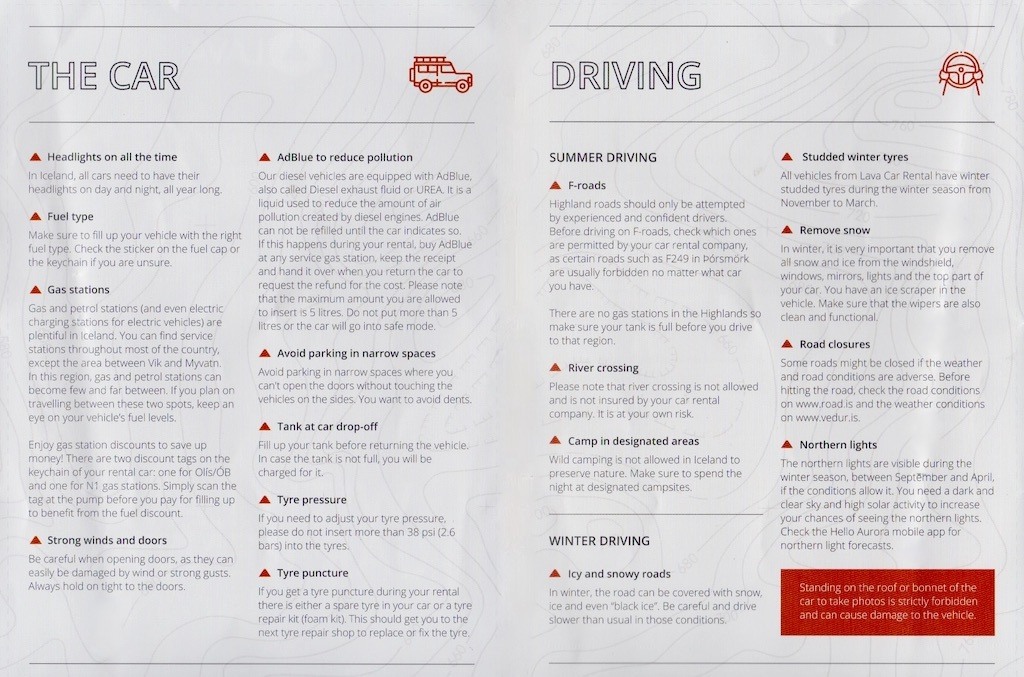
2. WATCH FOR ANIMALS
It is not uncommon for sheep and other animals to wander onto the road in Iceland, so keep an eye out while driving. You would be hard-pressed to find car insurance that will cover you for damage done by an encounter with an animal.
I also read a story about some tourists returning to their car to find a bunch of sheep napping in the shade of the car. Their horns did $3500 USD worth of damage in scratches to the car (See Tripadvisor forum post).
Having once looked out the window of our beautiful farm stay in Napa to find goats on the roof of our car, I know from experience that these things occasionally do happen (and seemingly more frequently in Iceland).
3. WATCH YOUR SPEED
The speed limits are generally 50 km/h in urban areas, 70km/h approaching towns, 80 km/h on gravel roads and 90 km/h on paved highways and rural roads.
You will not typically see a ton of police cars on the roads in Iceland. On a recent 11-day, (1500km) driving trip, we saw 5. The country does have a few speed cameras here and there, including in tunnels. (Currently anticipating a ticket for the latter from our most recent trip!)
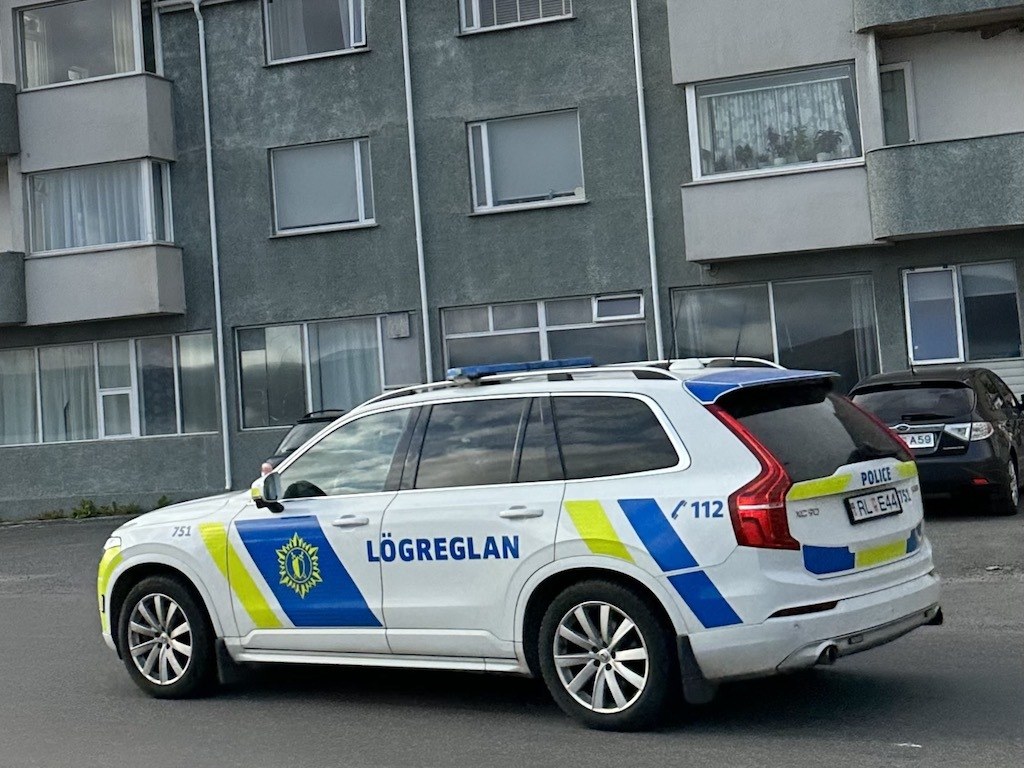
4. CONSIDER YOUR HOURS OF DAYLIGHT
I couldn’t help but laugh to myself as I watched Game of Thrones: The Last Watch (the making of the final season of GOT). Apparently, when it was decided that Iceland would be a filming location, nobody considered how few hours of daylight the country gets in the winter.
I had a similar experience as I planned a November trip to Iceland (I should have known better as I live in Canada where winter days are also short.) Only at the last minute did I realize that I would have to put some limits on a big day of sightseeing in the south, since the sun wouldn’t even rise until 10am.
While it is not a huge deal, if you are not comfortable driving in winter conditions, you may be even less inclined to do so in the dark. In mid-December you will get to enjoy only a brief four hours of daylight. Of course, you benefit from the opposite effect in summer where you can enjoy over 20 hours of daylight in mid-June.
5. TAKE CARE PARKING
Make sure your vehicle has ample space around it when you park so as not to put your vehicle at risk of door dings or other damage.
It is also very important to park into the wind. Car doors can get ripped off with a very strong gust (much more likely in the stormier winter season). While I haven’t seen this happen myself, an Icelandic guide enthusiastically told me he had seen this happen several times.
6. CHECK ROAD CONDITIONS
Be sure to check road conditions ahead of time on vedur.is so as to avoid any unnecessary hazards (like the unexpected rough gravel road detour we once took). This will help to minimize your driving risk and potential vehicle damage. See more driving tips in the next section.
LEARN MORE
Do you have specific questions about renting a car in Iceland? Please feel free to reach out to me via direct message on Instagram, Facebook or by email.
Want to see more unique adventures? I would love for you to follow along with The Better Beyond on Instagram!
A FUN READ: This is quite an interesting article from the New Yorker about the civilian rescue force in Iceland. These volunteers often find themselves helping out stranded tourists.
FURTHER READING
- Iceland Westman Islands Guide
- Self Driving the Golden Circle, Iceland
- Self Driving the Iceland Ring Road
- Iceland Winter Packing List
- The 10 Best South Coast Iceland Hotels
- 15 Tips for Self Driving Iceland in the Winter
- 10 Best Things to do in Iceland in Winter

